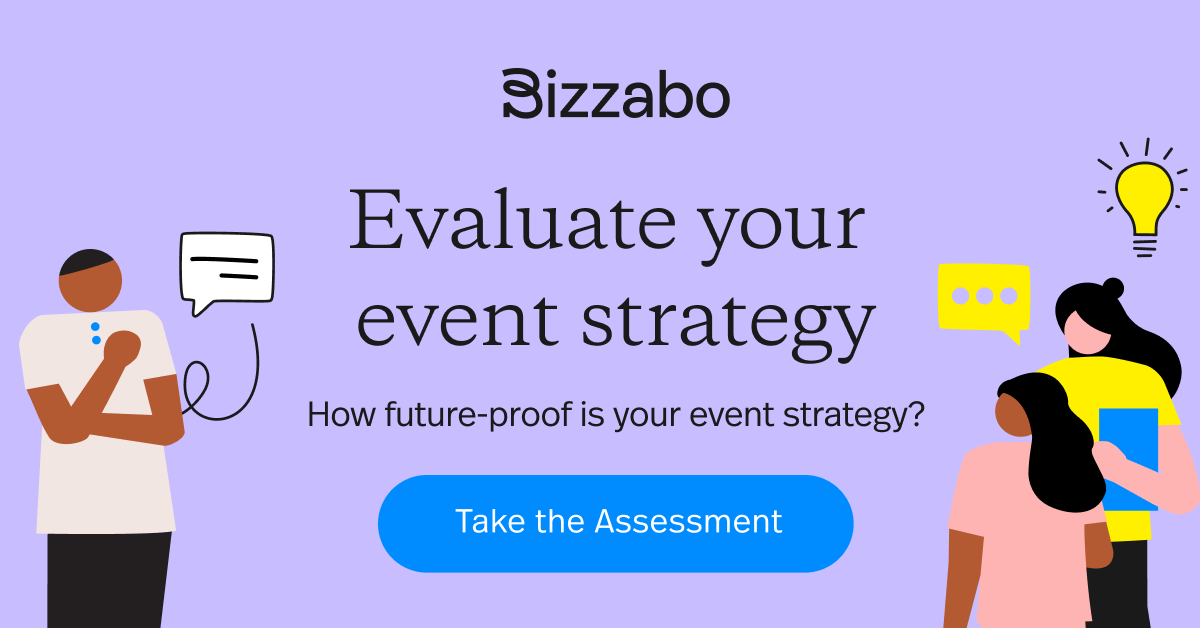Virtual Conferences: The Ultimate Guide to Event Success


Discover best practices for launching a virtual conference, engaging your audience, and more in this ultimate guide to virtual conferences.
When the COVID-19 pandemic hit, many event professionals found themselves in a place they never imagined. The industry went dark, but not for long, with event professionals learning to navigate the crisis. We were knocked off our feet but it didn’t take long for the industry to get back up and evolve more resiliently than ever before.
Within months, innovative approaches and event tech tools quickly emerged, allowing organizers to align their event goals to the virtual channel closely. As an industry, we found opportunities to create many of the first virtual events and are still taking courageous steps to shape the next era of events. With all of this in mind, we predict that event marketers will leverage virtual events as part of a larger hybrid event strategy in 2022 and beyond.
Virtual Conferences 101
Compared to other categories of virtual events, such as webinars or happy hours, virtual conferences are longer in nature and typically have a larger audience. Virtual conferences can last for hours and even days, depending on how an event organizer decides to break up the programming. Virtual conferences often have more complex content and sometimes a choose-your-own-adventure format offering many different breakout sessions, keynotes, and networking opportunities to choose from.
For an example of a successful virtual conference, look no further than SaaStr Annual, the world’s largest B2B Software Conference. In 2020, for the first time in the conference’s history, the event went virtual. To help SaaS executives, founders, and entrepreneurs scale their businesses, they held a two-day virtual experience concentrating on learning, mentorship, and networking. The virtual conference was a great success with 50,000+ Cloud and SaaS experts, 50+ speakers, 5,000+ brain dates, and endless 1-on-1 networking opportunities. Needless to say, it was a smashing success.
5 Benefits of Having a Virtual Conference
Over time, event professionals have discovered that there are some major benefits of going virtual and hybrid. Here are just five of those benefits:
1. Expanded Reach
According to our Evolution of Events Report, 80.2% of event marketers were able to reach a wider audience with virtual events. Virtual events take away some of the common barriers of entry that in-person events have. Attendees no longer need to travel or take time away from work and families to take part. Conference capacity is no longer limited to your venue. Virtual conferences have opened up events to a global audience and allowed events to reach a much wider audience than ever before.
2. Enhanced Safety
Event organizers are responsible for keeping their attendees, staff, and other stakeholders safe. Virtual conferences allow people to meet without the risks associated with an in-person event, particularly in pandemic times. By keeping attendees at home, you prioritize the health and safety of everyone.
3. Increased Sustainability
Events have a big impact on the environment. Virtual conferences have a significantly smaller carbon footprint than in-person events because you eliminate air travel, food waste, ground travel, hotels, and more. Additionally, you don’t end up tossing out stacks of printed materials, badges, and other materials. This makes virtual events more sustainable when compared to their in-person counterparts. In fact, MeetGreen’s sustainability team captured data using its UnCarbon calculator from events that went virtual and compared it to the same event’s in-person carbon footprint. The results were staggering.

Source: MeetGreen
4. Improvements in Accessibility and Inclusion
Virtual conferences are opening the doors of accessibility and inclusion. For example, virtual events often reduce the cost barrier because 80% of virtual event registrations are free. Even if the event isn’t free, the average price paid for a virtual event ($254 USD) is significantly lower than in-person event registration costs.
During our virtual summit, (Almost) HYBRID, Leanne Pittsford, founder at Lesbians Who Tech shared how she improved accessibility for attendees at (Not IRL) PRIDE SUMMIT.
Additionally, video captioning and the ability to tune in from anywhere have made virtual conferences accessible to attendees of varying abilities. Translations have also made it easier for a global audience to consume event content. Lastly, immunocompromised individuals and those with disabilities can easily tune in to virtual events safely and comfortably without worrying about an accessible venue space or other accommodations.
If you want more tips on how to counter distance bias at hybrid or virtual events, Sacha Connor at The Clorox Company has you covered in “The Right Way to Run Hybrid Meetings.”
5. Better Data
Data is a powerful tool, and the rise of virtual events has helped event marketers learn to leverage data in ways that weren’t possible before. Data helps tell a story about your attendees, from what sessions were most popular to how long people watched to how many people clicked on sponsors — data tells it all. Once you understand your data, you can base your tactics on information and plan for a better event.
The Differences Between Virtual Conferences and Webinars
Virtual events are a valuable channel for connecting with an audience. There are many differences between a virtual event like a webinar and a virtual conference. Below we will discuss some of the key differences.
- Uniform vs. curated: Webinars and smaller virtual events usually provide attendees with a single session or track. Virtual conferences, on the other hand, offer flexibility in single-track or multi-track agendas that span across hours or days. Also, the content is often custom for individual tracks. For example, INBOUND is HubSpot’s annual marketing conference. The conference is well-known for engaging content. Each year they have suggested tracks for different specialties including marketing, sales, and their own HubSpot Academy. Attendees can stay on one track or choose their own adventure. This allows attendees to curate their experience and determine which sessions they’d like to attend.
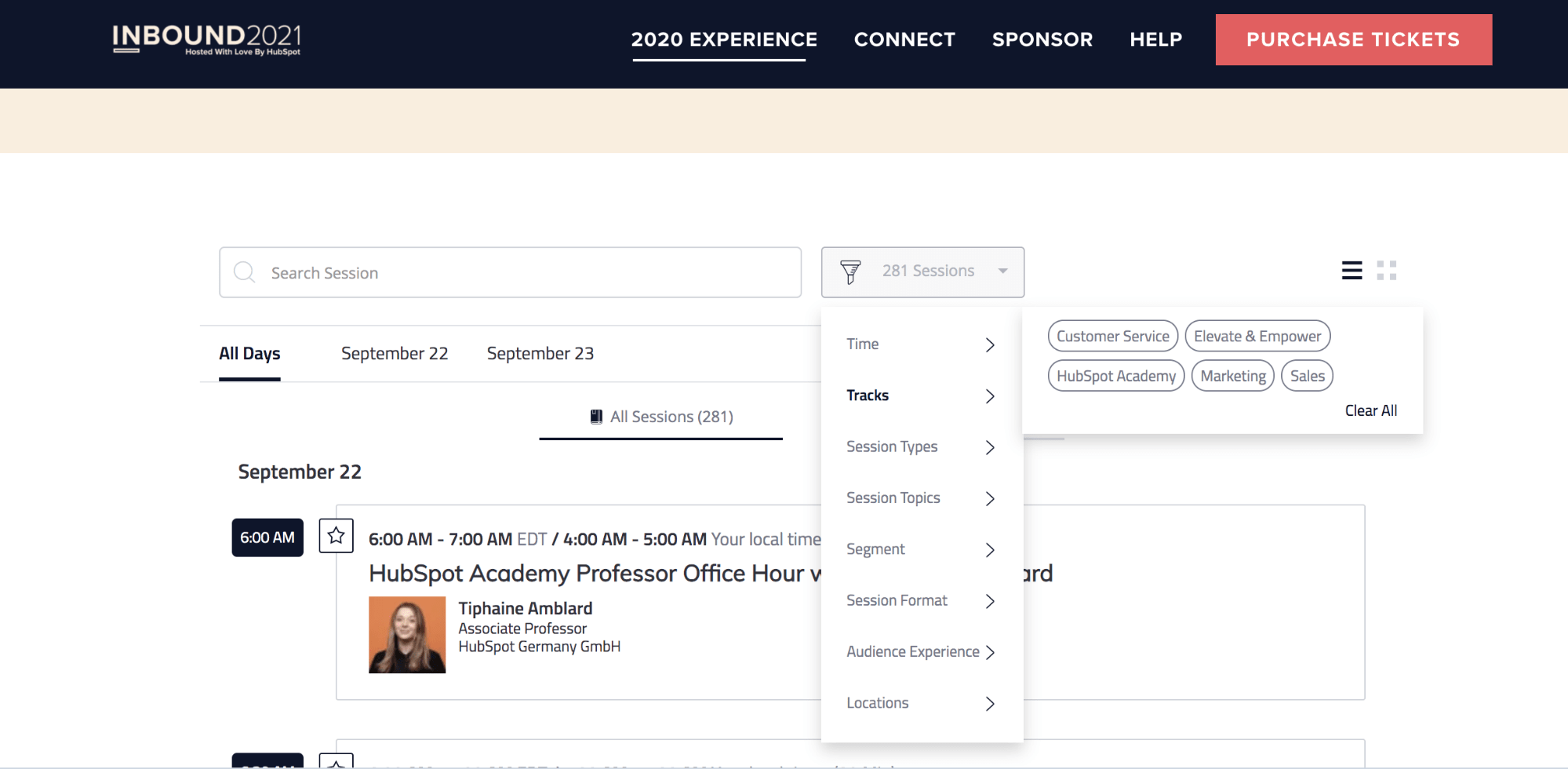
- Passive vs. interactive: Webinars can feature polls, surveys, and Q&As but the majority of engagement is passive. In addition to presentation tools, virtual conferences often create communities where attendees can connect with one another during and in-between sessions. These same community features make it possible for attendees to communicate with speakers and sponsors, allowing them to get more value out of the experience.
- Similar vs. unique experience: Because virtual attendees have the opportunity to curate their own experiences, they can create a unique path at an event. At the same time, event organizers can learn more about the preferences of their attendees by analyzing their journey across a virtual event. The resulting insights can help organizers send more nuanced follow-up messages to attendees, better tailor both virtual and in-person experiences to their audiences, and drive more personalized touchpoints.

7 Elements of a Virtual Conference
Virtual conferences are complex. Many elements need to be included in your event agenda to make it successful. Here are our top seven picks for connecting with and engaging attendees and amplifying your brand voice.
1. Keynotes
Keynotes set the tone for large conferences and summits by weaving together storytelling, insights, and predictions for the future. These presentations can solidify your event’s core theme and message. For example, DemandBase chose to take its keynote speech virtual for The ABM Innovation Summit. CMO Peter Isaacson provided valuable content to a broader audience of marketers who may not have had the chance to view his speech if it was given at an in-person event. Demandbase created an intro video featuring images, graphics, and logos to set the stage for the keynote. The video gave the digital experience a more polished feel.
2. Breakout Sessions
Breakouts are smaller, intimate sessions. We suggest 10-15 attendees with a moderator in each room to allow for a more personalized virtual experience. Make sure that the sessions are specific to a topic and align your breakouts to the tracks you have created as well as your overall event message.
- Fireside chats: These intimate breakout sessions are meant to be exclusive and limited in capacity. An intimate session with a thought leader and a moderator can be a great way to connect speakers and attendees and spark thought-provoking conversations.
- Panel discussions: Panels are a great way to address complex topics at your virtual conference. When a diversity of voices come together and discuss a topic (with a moderator), attendees have the chance to find common themes or explore other ideas they hadn’t considered. For example, WISE (Women In Sales Everywhere) created an online panel of three industry leaders and a moderator to discuss pressing challenges female sales professionals face today. To make the experience interactive, WISE used a live chat for attendees to comment and ask questions that could be addressed live with the panelists.
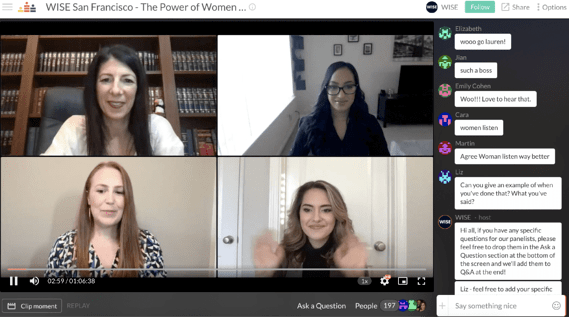
Source: WISE
- Demonstrations: Demos are a vital part of the sales process, but they’re also great for virtual conferences. Presenters can share their screens with attendees to walk them through a particular product or software offering. Salesforce World Tour, Sydney Reimagined! created a Demo Jam, which brought together AppExchange partners for three-minute live demonstrations of their apps. To increase engagement, Salesforce turned the demos into a contest where attendees could vote on which product they liked best.
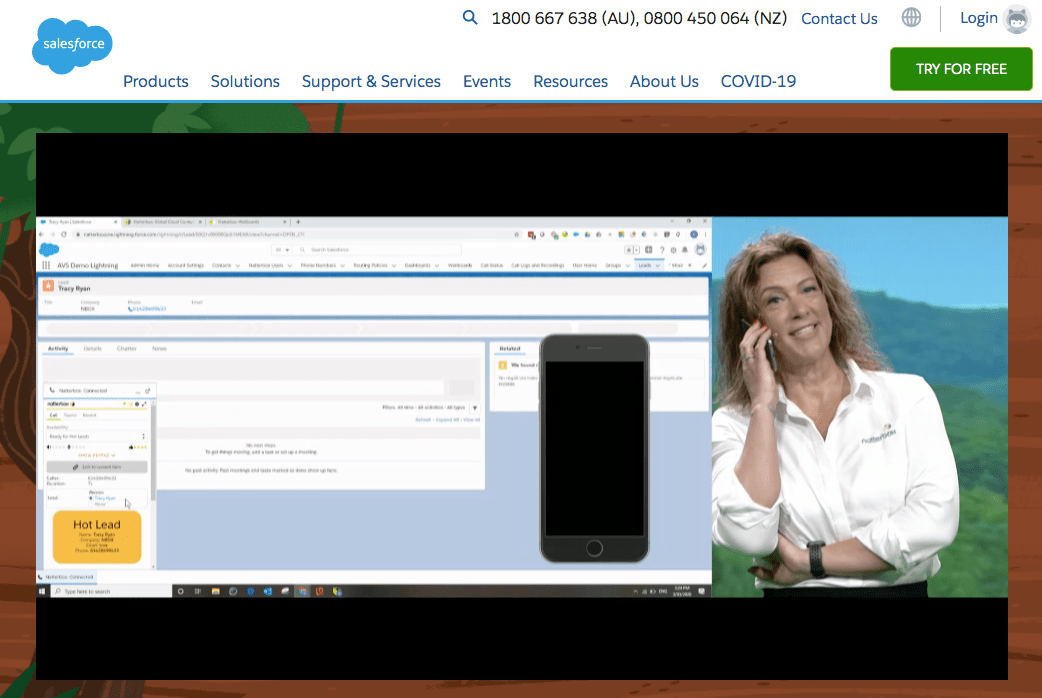
Source: Salesforce
- Workshops: Workshops can be educational or entertaining, but the best combine elements of both. Workshops offer the opportunity for an interactive experience and are great for hands-on learners. For instance, Great British Baking Finalist and Author Kim-Joy appeared at INBOUND to provide an entertaining and educational experience where the audience got to learn how to bake British biscuits.

Source: INBOUND
- Roundtables: Roundtables are an intimate format that allows attendees to have small group discussions. Successful roundtables split event attendees into smaller breakout groups with a moderator to ensure every participant can contribute and that the conversation stays on track.
3. Sponsorship Opportunities
An important component of many virtual conferences is event sponsorship. Sponsorships can provide much-needed financial support. Sponsors can also assist in increasing the reach and credibility of your event. In exchange, sponsors get the opportunity to engage with your event audience.
Naturally, interacting online is much different than interacting in-person, but there are still great opportunities when it comes to sponsoring a virtual event. Whatever you decide to do be sure it is valuable not only for your event but for your sponsors too. In a survey about confidence in the value of sponsorship opportunities at virtual events, event marketers were asked to rank their confidence on a scale of 1-10 — 6.5 was the average (Bizzabo, 2020). With plenty of room for improvement, here are some recommendations:
- Event sessions and speakers: Sponsors can add value to a virtual event with a sponsored session providing education, thought leadership, and actionable takeaways. Sponsors can pitch session content and provide speakers for keynotes, workshops, roundtable discussions, or panels. For example, Bloomberg Green Festival by Bloomberg Live has sponsored sessions that offer a variety of content for virtual attendees.
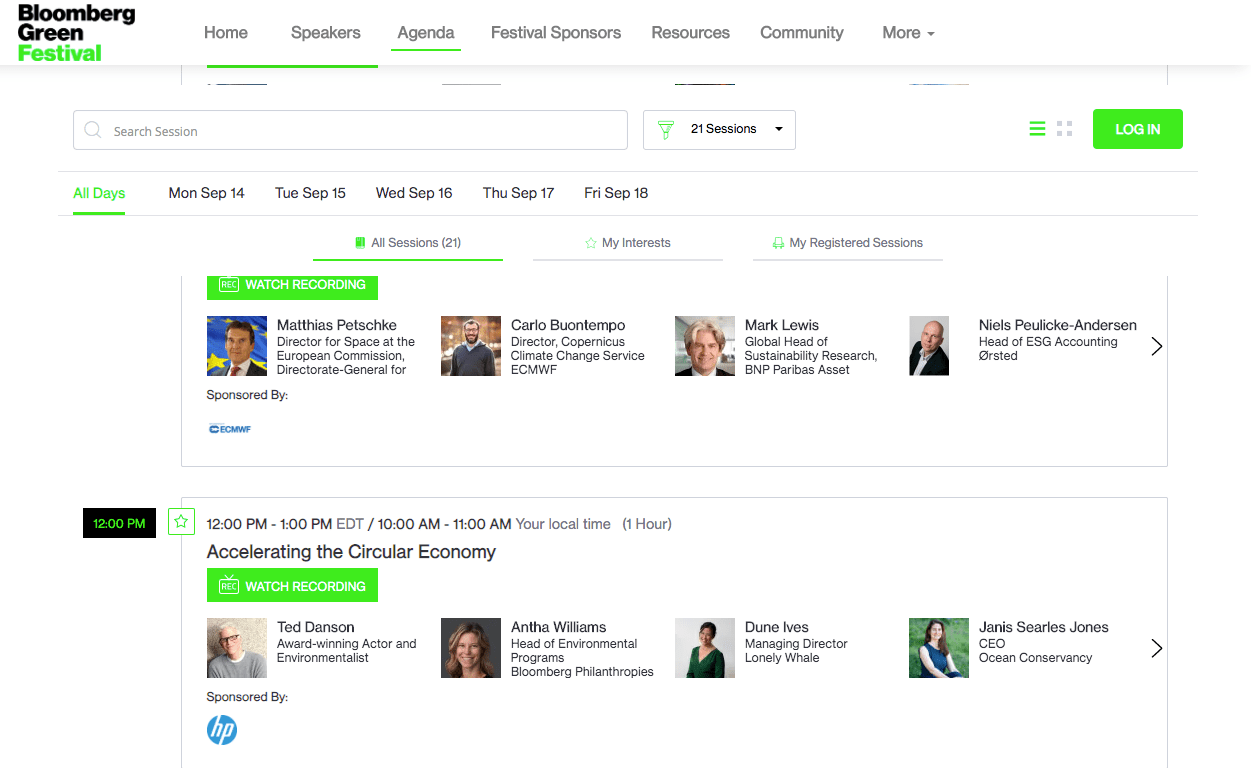
- Giveaways: Hosting giveaways throughout the event will help keep attendees engaged. Encourage sponsors to participate by providing prizes such as gift cards, streaming service subscriptions, nonprofit donations, or swag.
- Placement in graphics and banners: Most even success platforms offer the opportunity to have sponsor placement in several places throughout the virtual event. Consider having banners for top-tier sponsors on the main page of your event or placing sponsor logos in streamed sessions in the lower-thirds graphics.
- Virtual after-party or happy hour: Networking is a key component of events. Sponsors can create exclusive experiences during a virtual event by hosting a happy hour or after-party that includes a special guest, such as a celebrity for an “ask me anything” or a musician for a live performance.
- Collaboration: Remember, you don’t have to come up with all of the ideas yourself! Virtual events offer new and exciting opportunities for sponsors to get creative. Encourage your event sponsors to come up with unique sponsorship ideas for virtual conferences and give them the support and resources they need to make it happen. This will create a sense of buy-in by allowing sponsors to build valuable experiences during the event.
4. Networking
Networking can be a challenge for virtual events. According to our Evolution of Events Report, 68.8% of event marketers believe it is more difficult to provide networking opportunities when hosting a virtual event. What’s missing are the connections and unexpected moments. If you’ve ever been to an in-person event you likely miss the serendipitous moments of meeting a new contact waiting in a line or attending a happy hour.
But there are many exciting ways to create connections and foster communities with virtual conferences. e180 recognized the need for remote networking and took Braindates virtual this year. Braindates help attendees meet and learn from each other through meaningful conversations via video chat.
When an attendee signs up to take part in Braindates they either create or select topics they are interested in exploring, then set up a time to meet. This interaction can be 1:1 or in a group format. Learning concierges take part to help participants navigate the conversation and set intentions. At the end of the Braindate participants have the opportunity to connect with people in your session on LinkedIn and other platforms. 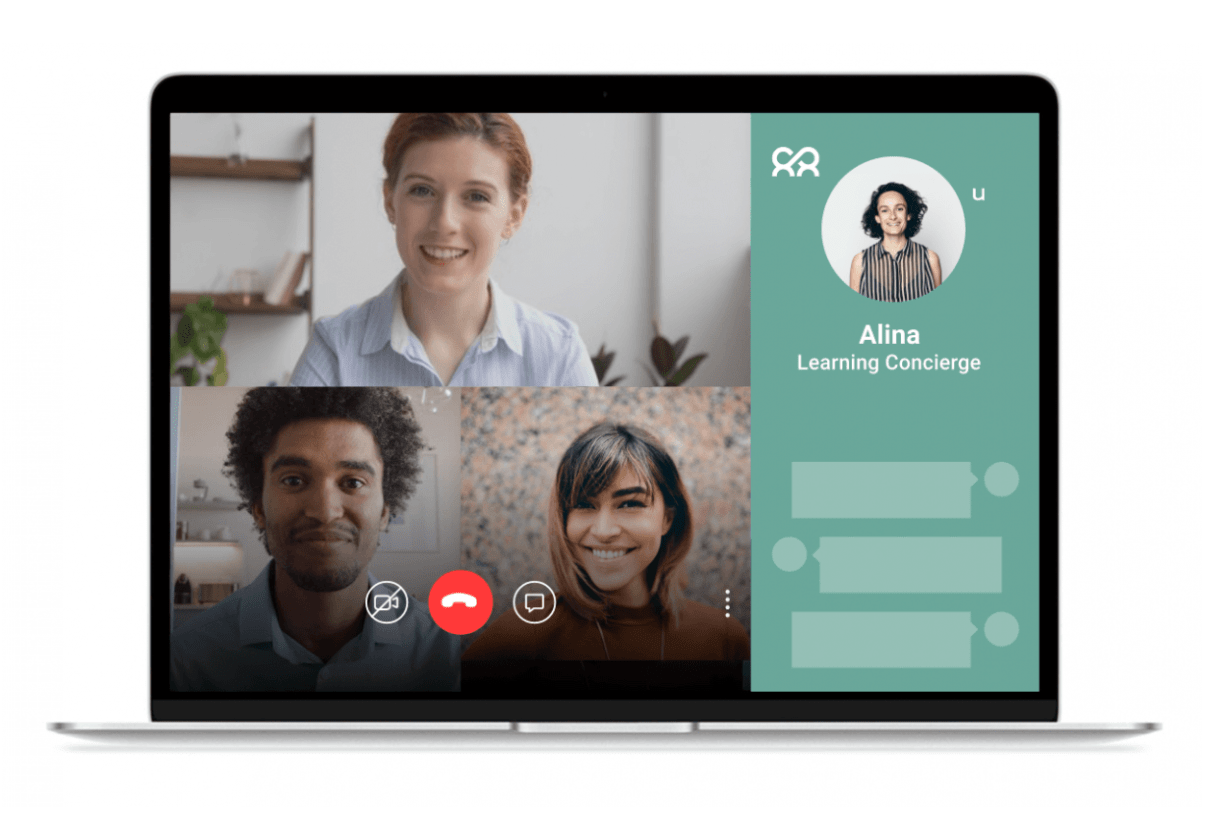
5. Entertainment
Event entertainment is a great way to add excitement to a virtual conference and keep your audience engaged. To break up the monotony of session after session, be sure to plan for great virtual entertainment that will delight your audience. At Bizzabo, we’ve prioritized providing entertainment, and here are a few ways we did that:
- A virtual DJ is a great way to get your attendees up and moving. DJ NEEKOLA kicked off our one-day virtual summit, bringing energy to everyone’s morning and getting them ready for the summit!
- To break up the sessions, we offered entertainment, including a magic show with Gary Ferrar. Even virtually, Ferrar’s performance was engaging, full of unexpected moments, and left the audience wondering “How’d he do that?”
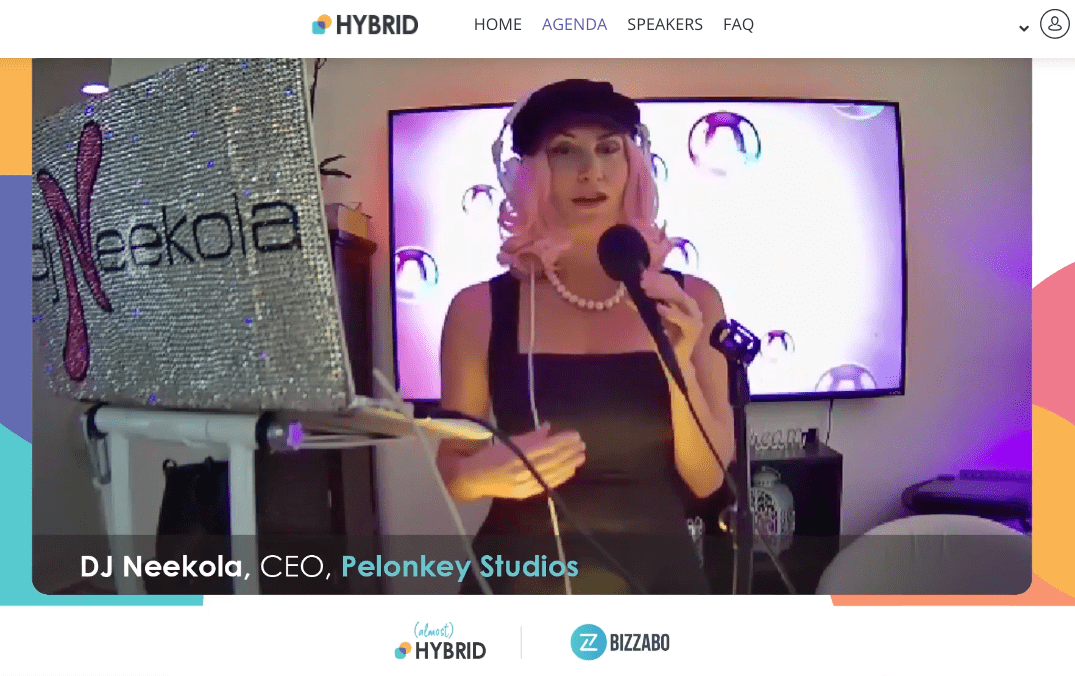
6. VIP Experiences
Including VIP experiences at your event is a great way to engage customers and drive revenue with unique experiences. Here are a few ideas:
- Early access
- Concerts or other entertainment
- VIP networking lounges
- Special merchandise
- Exclusive Q&A with an industry thought leader
- Swag mailed to them before the event
The sky’s the limit when planning these experiences. The key is to limit who has access. Monique Ruff-Bell, VP of Events at Money 20/20 USA, recognized C-suite executives rarely have the chance to relax and learn at conferences because they are constantly being stopped on the show floor. To solve this problem, she created a unique experience called “CEO Unplugged,” which included learning, networking, and fun offsite experiences, such as wine tastings and race car driving.
Another great example is Mastercard’s exclusive cardholder experience called Priceless. Through the magic of AR, cardholders can transport themselves into a 360-degree virtual environment and experience a range of opportunities from art tours to celebrity encounters.
Most experiences are free for cardholders, but Mastercard also offers the opportunity to bid on the most unique experiences, such as winning a happy hour with Los Angeles Dodgers™ manager Dave Roberts and pitching ace Clayton Kershaw and 10 of your closest friends.
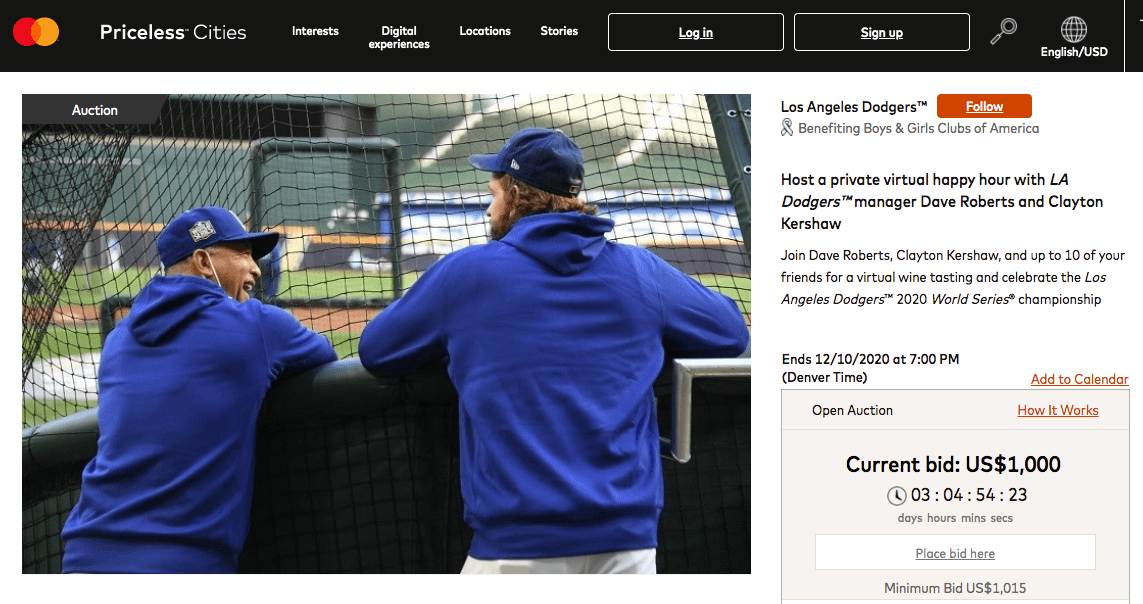
7. Swag
Attendees look forward to receiving swag, and there are plenty of great swag boxes to choose from. Sending direct mail is also a great way to add a physical touch to your virtual conference. For example, Hollis Co. sent out an epic box with inspirational quotes including a tumbler, notebook, pins, and more.

Source: Gifts For The Good Life
6 Steps For Planning a Virtual Conference
1. Determine Your Goals
What are you trying to accomplish? Once you have your purpose, you can set event goals. Your purpose and goals will act as the driving force behind your planning; anything you decide from your budget to your content should support the goals and purpose of your event.
2. Set a Conference Budget
Now that you have determined your event’s purpose, it’s time to think about an event budget. A detailed event budget will allow you to stay on track while planning your event. It will also let other stakeholders quickly see where money is going. For example, if you’re ordering an event swag box, detail out which items will be included, the cost of shipping, and a photo of what the swag will look like. The more details you have, the better.
3. Pick a “Virtual Venue”
Think of your event success software as your virtual venue. This is the environment your attendees will experience your brand and your event will unfold. There are many options out there and virtual environments are not one-size-fits-all. Look for software that allows you to run events that have a positive impact on your business and event ROI. On the attendee side, choose easy-to-use software that has a great user experience, including streamlined registration, and lets attendees connect and network easily.
4. Curate the Best Content
Event marketers need to design content with intention and purpose. Your attendees are now tuning in from home, so you’re constantly competing with kids, Netflix, and the 10 other browsers attendees have open. You need to tell a great story to keep your audience engaged. Be sure to give the attendees what they want to hear, and deliver it in a way they want to receive it.
In our (Almost) HYBRID virtual event, Director of International Events at Ubisoft International HQ Leon Winkler explains the importance of creating relevant and engaging content that is curated to your audience:
5. Prioritize Audience Engagement
According to our Evolution of Events Report, an overwhelming 67.7% of event marketers find it more difficult to keep attendees engaged at virtual events. Many of the strategies that make event organizers successful with in-person events — delivering exceptional experiences, attracting the right audience, and aligning with different stakeholders — are just as relevant in a virtual environment. To have an engaging experience, you need to not only have great content but interactive and personalized event experiences.
For instance, we brought in North Coast, NYC’s Premiere hip-hop improv team for an interactive performance. Before the show, North Coast asked the audience some questions about their favorite parts of events, which wove the audience into virtual show. Before the show even started attendees had a lot of fun reminiscing about special moments from their events in the chats. When it was time to perform North Coast delivered personalized improv hip-hop pulling from the unique experiences attendees shared.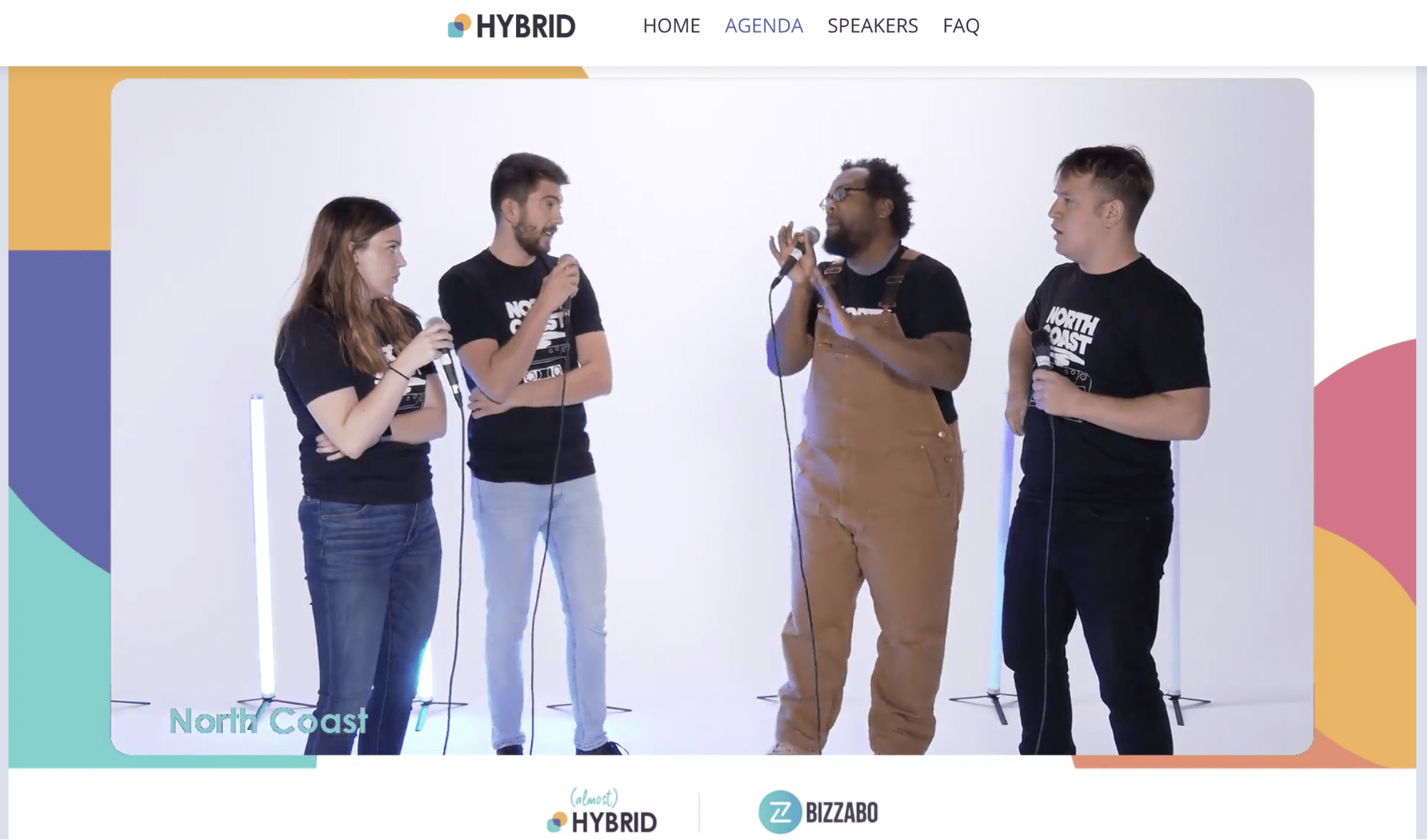
6. Rehearse and Test
With the many moving parts of a virtual conference, rehearsing and testing are vital. Here’s what you need to do:
- Get all of your speakers into rehearsals to get comfortable with the event flow.
- Have your team test the event tech on a variety of browsers and devices.
- Test all engagement tools, including chat, polls, Q&A, and so on.
- Check backgrounds and internet speeds.
Additionally, clarify and assign staff roles during the event to make sure everything is covered. Who will be monitoring the chats? Who is responsible for managing who is on screen and when? Ask lots of questions and keep testing until you’re confident the event will go off without a hitch.
15 Questions To Ask When Choosing a Virtual Event Solution
There are a variety of tools and solutions you can use to produce your next virtual event. If you’re feeling a little overwhelmed or unfamiliar in the territory, check out these key questions to ask to make sure you can get the most comprehensive platform to cover all your virtual event needs.
- What kind of event experience is offered?
- Can I create gated virtual sessions based on ticket types?
- Can I create multi-track and single-track virtual experiences?
- What analytics can I capture?
- Can I host multiple presenters?
- Is there a green room for presenters?
- Can we upload content?
- Are there ways for attendees to engage via chat, polls, Q&A, or whiteboard?
- Does the solution include breakout rooms?
- Can attendees access virtual events through a mobile device, tablet, or computer?
- Can attendees access virtual events and recordings on-demand through the event?
- How can I brand the event experience?
- Does the software play nice with the rest of our tech stack?
- Are there ways for attendees to react to presentations?
- Can I edit and create video within the software?
KPIs for Measuring Virtual Conference Event Success
Regardless of whether your event is virtual, hybrid, or in-person, it’s important to understand how your organization calculates event ROI. Here are just a few to get you started:
- Generate brand awareness: When measuring brand awareness, track the number of registrations, social media impressions, media placements, website visits, and website visits. All these metrics can help you determine the demand for your virtual event.
- Drive revenue: According to our 2020 Event Marketing Report, 54% of respondents surveyed expressed difficulty when proving ROI. To increase revenue with your virtual event, track leads generated, sales pipeline, opportunities created or influenced, and deals won can help you determine your event’s impact on the bottom line.
- Educate and delight customers: Events centered on customer and user engagement should measure product usage, survey results, and retention numbers. Review the registration-to-attendance conversion rate, retention rate during sessions (average watch time per session), and session attendance. After your event, compare the number of monthly active users before and after your event, product usage, number of demos given, NPS, post-event survey results, and the number of 1:1 meetings with customers. Need more insight into what your attendees, vendors, and team think about your event? Read “37 Event Survey Questions You Need to Ask For the Best Insights.”
- Satisfy event attendees: An important area of focus for any event is attendee engagement and satisfaction. When looking to measure event engagement, consider the following measurements: number of session attendees, number of questions in virtual sessions, number of poll responses, number of highly engaged attendees, and number of networking community check-ins.
Want more KPIs? Read “22 Important KPIs for Measuring Event Success.”
Key Takeaways: How To Achieve Success at Your Virtual Event
Hosting a virtual conference offers a powerful opportunity for marketers to flex their creative muscles. To make your event stand out from the noise, here are some tips:
- Plan the key elements of your virtual conference programming from keynotes to activations to networking.
- Use breakout sessions to create more intimate and personalized virtual experiences.
- Launch a successful virtual conference by identifying your event’s purpose, understanding your audience, and designing attendee-centric experiences.
- Create an engaging experience with great content, interactivity, user-friendly event software, and personalized event experiences.
- Ensure valuable sponsorship opportunities by collaborating with your sponsors and creating memorable experiences.
- Define your key metrics, such as reach, registrations, and net promoter scores for virtual success.
- Focus on a comprehensive virtual solution by asking the right questions, from user experience to branding to integrations and beyond.
Editor’s Note: This post was originally published in April 2019 and has been updated for relevance.
